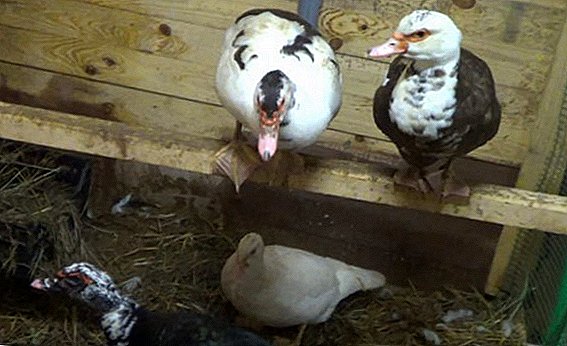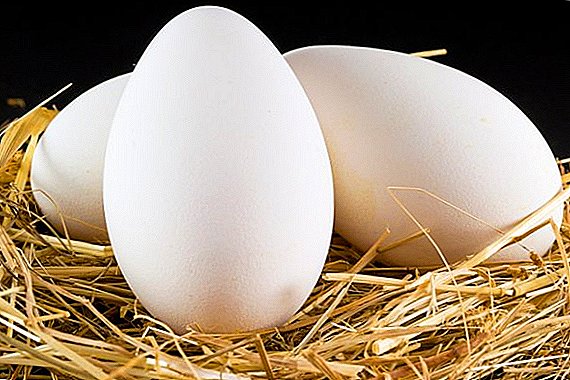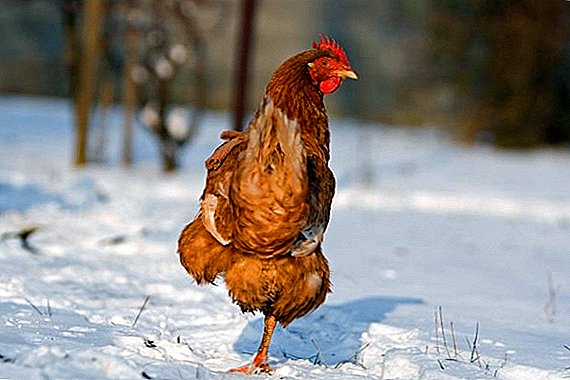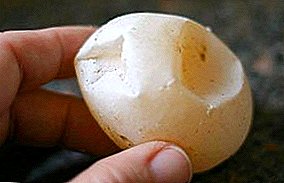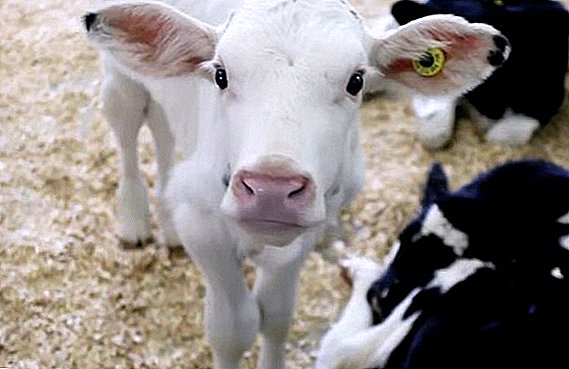 In the old days, cows ate only meadow grasses, and in winter, hay, prudently prepared for them by the host. However, in our technical age, the possibilities for preserving a similar way of feeding cattle remain less and less, and in the conditions of a large farm or a dairy farm there are none at all.
In the old days, cows ate only meadow grasses, and in winter, hay, prudently prepared for them by the host. However, in our technical age, the possibilities for preserving a similar way of feeding cattle remain less and less, and in the conditions of a large farm or a dairy farm there are none at all.
For this reason, breeders have long included in the diet of their pets a variety of combined feed. They are also used for raising calves, but proper nutrition of young animals has its own characteristics that must be taken into account in order to avoid intestinal disorders and other problems with the digestive system of calves.
Advantages and disadvantages of feeding cattle feed
The advantages of using feed in the formation of the diet of cattle are obvious. In particular, the advantages of this type of food is that it:
- includes all the necessary for animal matter (proteins, fats, carbohydrates, vitamins and minerals) in a concentration known to the farmer, and this, in turn, means that it is possible to plan and adjust the diet of a cow depending on certain circumstances (stables, feeding of sires, pregnant females, calves of different age groups, sick or weak animals, etc.);
- ensures that animals receive the maximum amount of nutrients with minimal feed consumption;
- allows to "force" the cow to eat those components important for its health that the animal refuses to eat in its pure form;
- very well absorbed;
- easily dosed;
- has excellent taste and is almost completely eaten by animals (minimal losses);
- enhances the immunity of cattle, provides additional protection against many diseases;
- improves the reproductive qualities of animals;
- presented in a wide variety of forms, consistency (granule size) and composition, which allows you to choose the ideal option for an animal of any age and purpose;
- is safe from a sanitary point of view, less pollutes the feeders, does not contain pathogenic microflora, which may be present in natural food (hay, grass, food waste) - as a result, cows are less likely to get sick, the percentage of death of young animals decreases;
- simplifies the process of harvesting the barn, which contributes to increasing labor productivity and reducing costs for the entire production process (increasing business profitability);
- it is easily transported and conveniently in storage, a little is exposed to damage, even in the conditions of the increased humidity or low temperatures, and occupies the minimum space (in comparison with the same hay);
- allows you to improve the quantitative and qualitative indicators of meat and milk with the most rational use of all funds spent on feed.

Find out how much an average cow, bull and calf weigh, and how to determine the weight of pets without weights.

Important! It is proved that the use of animal feed, especially in combination with vitamin supplements, allows increasing the productivity of cattle (weight gain, milk quantity and its fat content) by a quarter, and sometimes by a third compared to feeding with natural food. For example, fattening of young stock to slaughter weight through the use of modern feed mixtures can be reduced from 16 to 12 months.
Thus, using the feed, the farmer can be sure that his wards receive high-quality cereals and legumes, grass and pine flour, vitamins and minerals "in one bottle." If we talk about the shortcomings, then with proper use of compound feed those are few. In this regard, we can note only:
- the high cost of certain types of such products;
- complex technological process of self-production;
- possible errors in use, violation of the dosage, formulation, production technology at home, etc., may adversely affect the health and productivity of the herd;
- in the case of too early introduction of feed into the calf's diet, the baby may experience functional disorders of the digestive system;
- if cows from childhood are not accustomed to this kind of food, they can refuse it altogether without accepting either the taste or the strange texture of the new feed. In this case, the farmer has to resort to various tricks, mixing different feed among themselves, which causes additional inconvenience.

Varieties
Compound feeds vary depending on the composition, form, purpose, and other criteria. So, breeding bulls, pregnant, milking, dry cows and calves need different feeds. Moreover, for young stock there is a separate gradation of mixed feeds depending on age, for example, manufacturers offer calf food:
- from the 10th to the 75th day of life;
- from the 76th to the 115th day of life;
- from the 116th to the 400th day of life;
- from 1 to 6 months;
- from 6 to 12 months;
- from 12 to 18 months, etc.
Important! Unlike other types of farm animals, cattle are very unpretentious to the conditions of detention, but shows critical sensitivity to the quality of the feed.This feature concerns young ones in the first place, which is why it is very important for a novice farmer to understand the main distinctive qualities of each of the existing types of compound feeds and select those that are best suited for use in his farm.
In the form of release
Form release - one of the main criteria for the classification of animal feed. For cattle, loose, granulated feed and briquettes are used.
Loose
 Mixed mixed fodder is a conditionally homogeneous mixture of purified and crushed to the desired size components that make up the usual diet of a cow (hay, straw, cake, cereals, legumes, meat and bone meal, various vitamin and mineral supplements, etc.), but combined in accordance with with certain scientifically based recipes.
Mixed mixed fodder is a conditionally homogeneous mixture of purified and crushed to the desired size components that make up the usual diet of a cow (hay, straw, cake, cereals, legumes, meat and bone meal, various vitamin and mineral supplements, etc.), but combined in accordance with with certain scientifically based recipes.
There may be three types of grinding - small, medium and large.
Did you know? Nine out of ten calves that do not live to slaughter age die from diseases of the gastrointestinal tract or pathogens that enter the body with food. Thus, the success of the beef production and sales business directly depends on the quality of food.This option is the easiest to prepare, and therefore, ceteris paribus, it is cheaper than the other two forms (if the price of pellets or briquettes is lower than the bulk feed, this means that the latter is much higher quality).
Granulated feed
 In this case, the loose composition prepared by the above method using a special device, called a granulator, is pressed under high pressure to larger clumps (granules) of the same, usually cylindrical shape and size.
In this case, the loose composition prepared by the above method using a special device, called a granulator, is pressed under high pressure to larger clumps (granules) of the same, usually cylindrical shape and size.
The size of each granule, depending on the age of the animal for which the product is intended to be fed, is from 4.7 to 19 mm.
Granules have a number of advantages over bulk feed, namely:
- they are easier to store and transport;
- they are more suitable for farms with mechanized feeding of cows;
- The elements in their composition are not subject to mechanical damage and are always presented in the same composition (with loose form, so-called self-sorting is possible);
- they give much less loss when used (the granulate spills less from the feeders);
- nutrients in the process of granulation break down into more easily digestible forms, with all the vitamins are completely preserved;
- additional processing involves the destruction of pathogenic microflora, which could be present in the original raw materials.
Read about the feeding stages of calves and the vitamins that young animals need for rapid growth.
Briquetted
 It is prepared almost the same as granular, but is formed into a larger form - rectangular flat tiles, which can have different sizes. The basis, or rather not less than half, of such feed is usually made up of coarse components (hay, straw), and to ensure the form of a briquette, as a rule, feed syrup (molasses) is used. Before using such briquettes must be crushed, but they are very conveniently packaged, transported and stored, which makes this form especially attractive for large livestock farms.
It is prepared almost the same as granular, but is formed into a larger form - rectangular flat tiles, which can have different sizes. The basis, or rather not less than half, of such feed is usually made up of coarse components (hay, straw), and to ensure the form of a briquette, as a rule, feed syrup (molasses) is used. Before using such briquettes must be crushed, but they are very conveniently packaged, transported and stored, which makes this form especially attractive for large livestock farms.
To destination
When choosing feed, the farmer must take into account not only his form and category (sex, age, purpose) of the animals for which this food is intended. The fact is that some products are a complete source of nutrition, while others are supplements or food additives. In order not to be mistaken, one should be guided by generally accepted symbols that are indicated by the manufacturer on the package.
Polnoratsionny (PC)
This type of combined feed includes all substances necessary for the appropriate category of animal for normal and full development. The composition of the product mainly consists of cereals, primarily oats, wheat and barley, however, when forming a specific composition, the “consumer group” is necessarily taken into account - different phases of animal development. For example, the smallest calves are given pre-starter PCs, ensuring maximum immunity and growth. Then, starter varieties of feed are introduced into the diet, etc. This approach allows increasing the productivity of each individual and, accordingly, ensuring economic success for the whole economy.
For example, the smallest calves are given pre-starter PCs, ensuring maximum immunity and growth. Then, starter varieties of feed are introduced into the diet, etc. This approach allows increasing the productivity of each individual and, accordingly, ensuring economic success for the whole economy.
Did you know? Marbled beef from a Japanese cow Wagyu is the most expensive meat in the world. A kilogram of such a fillet can cost more than $ 500, and especially tender pieces are sometimes valued at $ 1,000 for a small steak. To get such valuable meat, the Japanese feed their animals with only the best herbs, water them with beer and make massages with sake. And farmers from Australia, recently also growing this breed of cows, instead of "plebeian" beer give them exquisite red wine.The PC can be fully used by the livestock breeder instead of the usual for small farms of hay, silage and grain mixtures that can not provide a similar result.
Concentrated (K)
Unlike high-grade feeds, concentrated ones contain an increased proportion of proteins, minerals, vitamins and fiber. They are not intended to replace other types of food, but are only an addition to it, a kind of fertilizer, which is designed to improve the growth of the animal and strengthen its immunity. The composition of the concentrates are divided into two main groups - carbohydrate and high protein. The former are based on corn, millet, wheat, barley (carbohydrate content reaches 70%), the latter include soybeans, peas and other legumes, as well as various types of meal cake (protein content up to 25%).  Concentrated feed is best used in the winter, diluting them with grain, hay, silage, straw and roots. The maximum proportion of such concentrates in the diet should not exceed 50%.
Concentrated feed is best used in the winter, diluting them with grain, hay, silage, straw and roots. The maximum proportion of such concentrates in the diet should not exceed 50%.
Concentrates can be given to calves in a dry form or mixed with water in the form of porridge.
Feed mixtures
In fact, feed mixtures represent the very full nutrition of calves, which can be provided using concentrates. Several types of concentrated feed (including carbohydrate and protein) are mixed together and diluted with grass meal, as well as molasses or purified feed urea, which is an excellent source of nitrogen.
Important! Urea can be added to feed mixtures to cows weighing at least 250 kg. The calf's stomach is too weak microflora to process ammonia.High-quality feed mixture can be prepared independently, and large livestock farms do just that. However, this requires very strictly follow the recipe, so novice farmers always have the opportunity to purchase ready-made feed mixture, which includes all the necessary components in the right proportions.
Additives (BVD)
The symbol "BVD" stands for protein-vitamin supplement. The composition of this type of product includes, therefore, proteins, vitamins and mineral salts necessary for the calf in a certain phase of its development. BVDs allow the farmer to personally prepare a full-fledged nutritious diet for his flock, enriching the feed mixture with protein, vitamins and minerals by adding 20-25% BVD to it. 
Premixes (P)
Premixes are also a food additive to the diet of cattle. They are designed to enrich the feed used by the farmer with vitamins, essential amino acids and other components that increase the immunity of the animal and stimulate its growth.
Learn how to choose a calf when buying and what nickname to think of it.
The basis of premixes are usually wheat and wheat bran, as well as the meal and rapeseed or soybean meal. Unlike BVD, there are very few added premixes in feed mixtures — no more than one percent. 
What is usually included in the feed
Combined feed for cattle, of course, significantly differ in composition, however, if we talk about a full-group product group, they usually include:
- grain - barley, millet, corn, oats, wheat (emphasis is placed on high, up to 70%, carbohydrate content and low protein content). Cereals usually make up 65% of the nutrient mix;
- legumes - soybeans, peas, beans, lupins. This group of products is designed to provide the animal's body with complete protein;
- roughage (straw, hay);
- meat and bone meal;
- waste of Pancake week cultures (cake, meal);
- grass and pine flour;
- meat and fish waste;
- salt highly purified;
- mineral elements (calcium, phosphorus, magnesium, potassium, sulfur, manganese, iron, zinc, iodine, copper, cobalt, selenium, etc.);
- vitamin supplements (carotene, cholecalciferol, tocopherol, menadione, thiamine, riboflavin, nicotinic acid, choline, pantothenic acid, biotin).
We recommend to know what to do if the calf is sluggish and does not eat well.
How old and how to feed the calves
There are pre-starter feed for calves, intended for feeding babies from the age of three days. However, most experts strongly recommend that at least two weeks from the moment of birth do not include in the calf diet any food other than colostrum. Then you can carefully and gradually begin to diversify the diet, including whole milk, reverse, boiled potatoes and special feed mixtures for the appropriate age. In this case, the milk of the calf should continue to receive at least three months. Daily allowance of feed for calves does not exist. Little bulls have a very weak digestive system, under which the farmer needs to adapt, and here everything is very individual. At that moment, when the amount of the starter feed mixture eaten by the baby reaches one and a half kilograms, grain or the usual "adult" combined food is gradually introduced into the diet. Usually, in three months of life, babies eat about 18 kg of starter mix in combination with whole milk and up to 25 kg of starter when using skim milk or milk substitutes.
Daily allowance of feed for calves does not exist. Little bulls have a very weak digestive system, under which the farmer needs to adapt, and here everything is very individual. At that moment, when the amount of the starter feed mixture eaten by the baby reaches one and a half kilograms, grain or the usual "adult" combined food is gradually introduced into the diet. Usually, in three months of life, babies eat about 18 kg of starter mix in combination with whole milk and up to 25 kg of starter when using skim milk or milk substitutes.
Did you know? During the first days of life, the calf is able to drink up to eight liters of colostrum and to limit the appetite of the baby during this period is by no means impossible.The use of combined feeds for cattle rearing is an integral part of the modern approach to animal husbandry. This food has a number of indisputable advantages over nutrition on the principle of free grazing, however, unlike the latter, it requires a thoughtful approach from the farmer and great care. Both the excess and the lack of one or another type of such mixtures and additives can negatively affect the growth of young stock and the productivity of the adult herd, and in the case of serious mistakes, even lead to disease and animal death.


